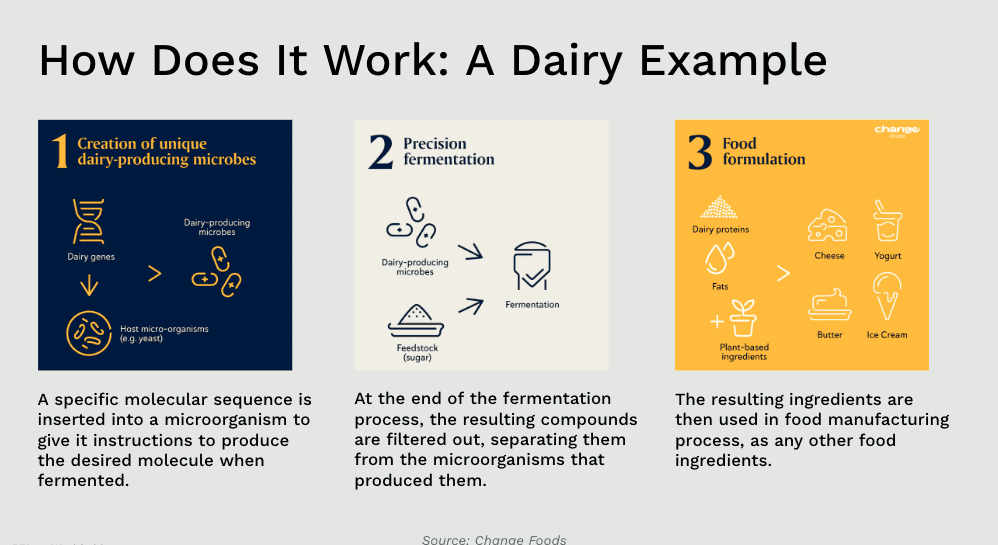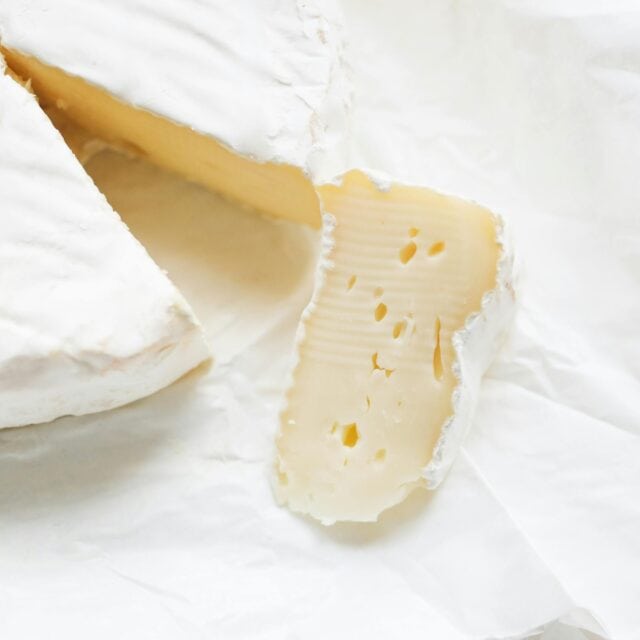What is Precision Fermentation?

How does Precision Fermentation Work?
Precision fermentation combines the process of traditional fermentation with the latest advances in biotechnology to efficiently produce a compound of interest, such as a protein, flavor molecule, vitamin, pigment, or fat.
- A specific molecular sequence is inserted into a microorganism to give it instructions to produce the desired molecule when fermented. These molecular sequences are derived from digitized databases rather than taken directly from the relevant animals or plants.
- At the end of the fermentation process, the resulting compounds are filtered out, separating them from the microorganisms that produced them.
- Precision fermentation has been in use globally for over 30 years to make medicines (like insulin) and countless common food ingredients (such as human milk oligosaccharides or rennet).


A TIME-TESTED TECHNOLOGY
Open your pantry or medicine cabinet, and you’ll likely find something made using precision fermentation. From insulin, rennet in cheese, natural flavors, citric acid, amino acids, and numerous vitamins commonly found in foods we eat, many products we consume today would be nearly impossible to make at scale without precision fermentation.

LEARNING FROM NATURE
Precision fermentation is an evolution of the natural process of fermentation of microorganisms (like yeast, algae, or fungi), combined with the latest developments in biotechnology. It’s similar to the fermentation process used to make beer, sauerkraut, and yogurt. In precision fermentation, we use bioengineering techniques to program microorganisms by giving them a specific genetic code to produce a compound of interest when fermented under precise conditions.

ANIMAL-FREE PRODUCTION
The code that is programmed into naturally-fermenting microorganisms is the exact copy of DNA sequence that is generally found in a digitized databases of DNA sequences (including animal, plant, and microbe sequences). That means we are able to use animal-based genetic code with no animal involvement whatsoever in the process. Because the resulting compounds are filtered out and separated from the microorganisms that produced them, the result is the same ingredient, made by microorganisms, instead of animals. Precision Fermentation uses the same process to make ingredients found in plants and microbes as well.